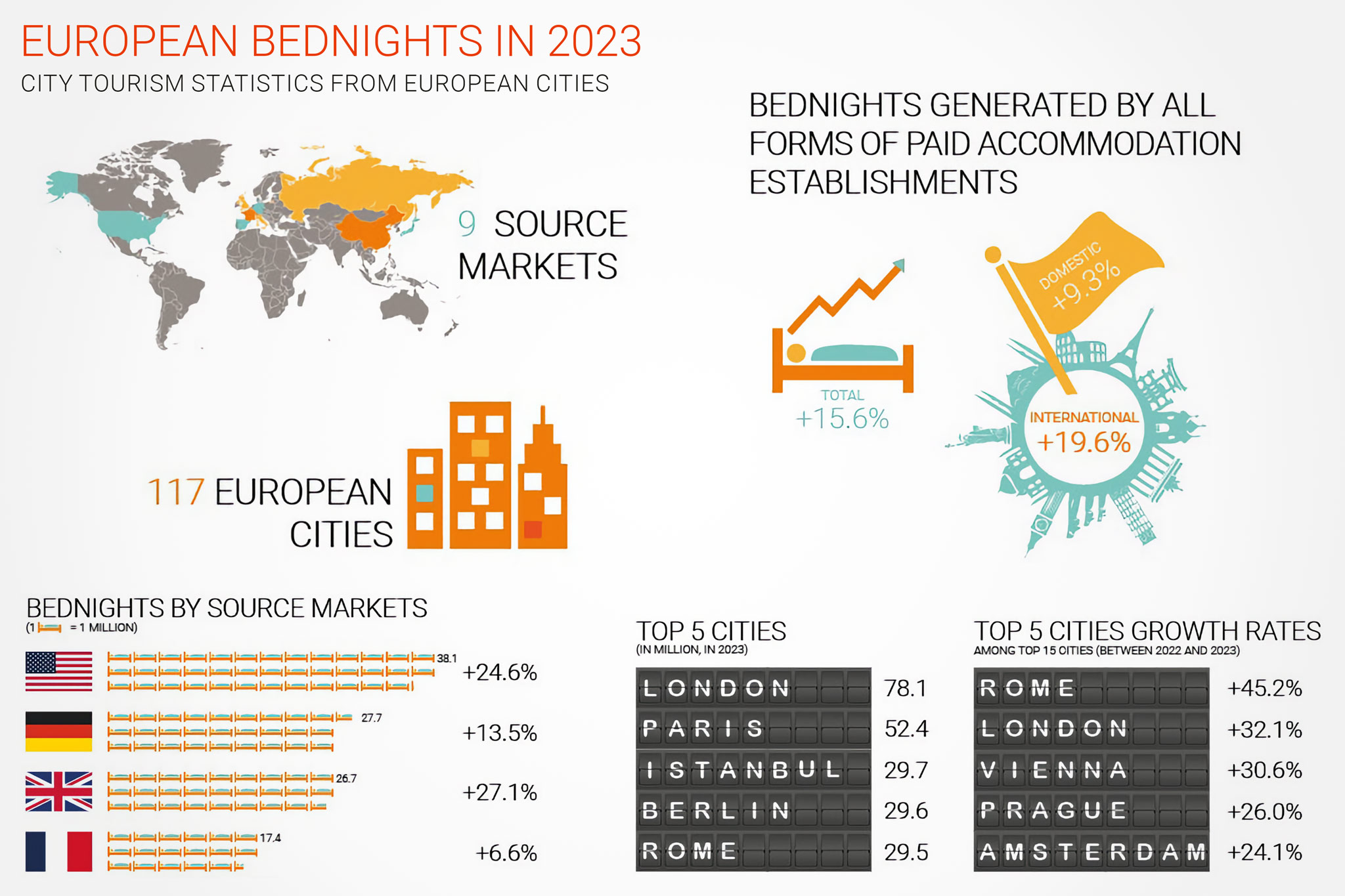The 20th edition of the City Travel Report by CityDNA (formerly known as the CityDNA Benchmarking Report) reveals steady growth in European city tourism, with cities achieving an average increase of 13.7 per cent in 2023. The report, featuring results from 117 European cities, showcases the remarkable progress made in the post-pandemic recovery. The report includes estimations of transport-related CO₂ emissions related to city tourism in line with sustainability strategies.
“This report perfectly illustrates a fruitful collaboration between European destinations; it highlights significant trends, notable challenges, qualitative KPIs and key market dynamics shaping city travel’s landscape compared to national tourism.” commented Barbara Jamison-Woods, President of City Destinations Alliance.
This development is due to the growth in total bed nights experienced in 114 out of 117 analysed cities. The top three cities in terms of total bed nights in 2023 remained the same as in 2022: London, Paris, and Istanbul.
Among the top 20 performers, the most notable increases were recorded in Rome (45.2 per cent), London (32.1 per cent), and Vienna (30.6 per cent). Compared to 2019, Istanbul had the highest growth, where the city exceeded its 2019 values by 24.3 per cent.
The main source markets for European cities have shown robust performance in 2023. However, the growth rates were diverse: single-digit growth for France, double-digit growth for the United Kingdom, United States, Italy, Spain, and Germany, and impressive triple-digit growth for China and Japan.
The past year has shown positive average international annual growth rates in both the report cities (19.6 per cent) and the EU 27 nations and the UK (13.8 per cent). Cities increased much more than other regions in terms of total volumes (15.5 per cent versus 7.2 per cent), which highlights yet again the importance of city destinations within European tourism.
Further analyses revealed that the average growth rate of bed capacity gained momentum, with an increase of 4.6 per cent in 2023. Regarding bed occupancy, the benchmark average in 2023 was 46.8 per cent, compared to 43.1 per cent in 2022.
In line with the varied sustainability strategies that are on the agendas of many DMOs, the City Travel Report by CityDNA continues with estimations of transport-related CO₂ emissions related to city tourism. Upon inspection of CO₂ emissions caused by tourists travelling to/from the city, the average nominal value for total CO₂ in 2023 was 776,678 kilograms, which, unsurprisingly, was heavily skewed by large cities such as Amsterdam, Lisbon, Vienna, and Prague. Regarding kg CO₂ per tourist 2022–2023, the average percentage growth was 11.8 per cent, with only 3 out of 61 analysed cities recording negative rates, namely Stockholm, Liepaja, and Luxembourg.
These results offer a brief preview of the further post-pandemic recovery and stabilisation of European city tourism in 2023 despite ongoing challenges (e.g., conflicts in Ukraine and the Middle East, inflation, and the impact of climate change). The City Travel Report by CityDNA offers more insights and analyses that can be of great assistance to city DMOs in setting realistic targets for their destinations.
“City tourism is the clear growth driver of tourism demand in Europe and the most important segment in tourism. In 2023, demand was on track to fully return compared to the period before,” concluded Karl Wöber, President of Modul University Vienna.



